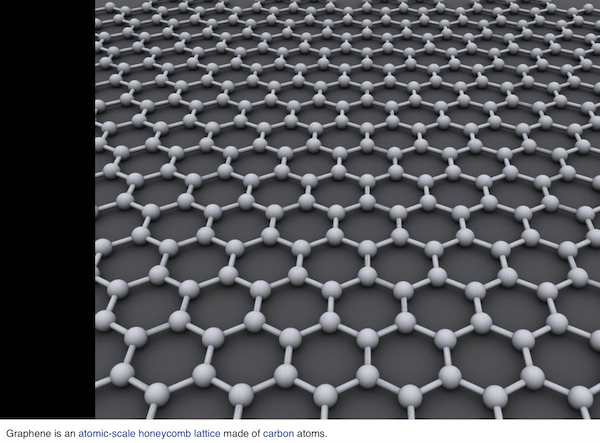
Graphene technology is evolving and science fiction writers are going to have to get even more creative as major advancements are making once-thought-impossible tech real. Researchers from Australia have tapped into Graphene to make 3-D “pop up” real-time holograms, like those you would see in Star Wars and many other science fiction television shows and movies.
Remember this?

BYPASS THE CENSORS
Sign up to get unfiltered news delivered straight to your inbox.
You can unsubscribe any time. By subscribing you agree to our Terms of Use
Latest Video

So, that once-thought-impossible holographic technology, is real. Many are unaware of what Graphene is and what makes it so special. According to Wikipedia:
Graphene (/ˈɡræf.iːn/)[1][2] is an allotrope of carbon in the form of a two-dimensional, atomic-scale, hexagonal lattice in which one atom forms each vertex. It is the basic structural element of other allotropes, including graphite, charcoal, carbon nanotubes and fullerenes. It can also be considered as an indefinitely large aromatic molecule, the limiting case of the family of flat polycyclic aromatic hydrocarbons.
Graphene has many extraordinary properties. It is about 100 times stronger than steel by weight,[3] conducts heat and electricity with great efficiency and is nearly transparent.[4] Researchers have identified the bipolar transistor effect, ballistic transport of charges and large quantum oscillations in the material.

ZD.net reports in an article titled “Australian researchers reveal graphene 3D display tech“:
Researchers at Australia’s Swinburn University of Technology have devised a new technique using graphene to create a three-dimensional pop-up floating display like the fictional hologram technology featured in films such as Star Wars and Avatar.
At the centre of the new technique is graphene, a single-atom-thick carbon material derived from graphite, which is emerging as a wonder substance for a whole range of technology, including high-energy batteries, 3D printing, electronic circuits, and photovoltaic cells.
It is currently being employed by research teams around the world for its remarkable conductivity, strength, insulation, and weight properties — all of which outperform the closest material competitors by enormous degrees, according to researchers.
The Swinburn University of Technology researchers were able to develop a process without involving heat or temperature changes to create nanoscale pixels of refractive index — the measure of the bending of light as it passes through a medium — made of reduced graphene oxide.
This is crucial for the subsequent recording of the individual pixels for holograms and naked-eye 3D viewing, according to the researchers.
“If you can change the refractive index, you can create lots of optical effects,” said director of Swinburne’s Centre for Micro-Photonics professor Min Gu. “Our technique can be leveraged to achieve compact and versatile optical components for controlling light. We can create the wide-angle display necessary for mobile phones and tablets.”
Gu said this new generation digital holographic 3D display technology could also have applications for military devices, entertainment, remote education, and medical diagnosis.

Dr Xiangping Li, who is one of the leaders of the research, said that owing to graphene’s atomic layer thickness, and high mechanical strength, the use of the material in mobile display units for flat, two-dimensional displays is burgeoning.
“Our technology could also underpin future flexible and wearable display devices and transform them for 3D display,” he said.
The research, A thermally photoreduced graphene oxides for holographic 3D images, has been published in Nature Communications, and is a collaboration between Swinburne University of Technology, the Beijing Institute of Technology, Griffith University, and Tsinghua University in China.


